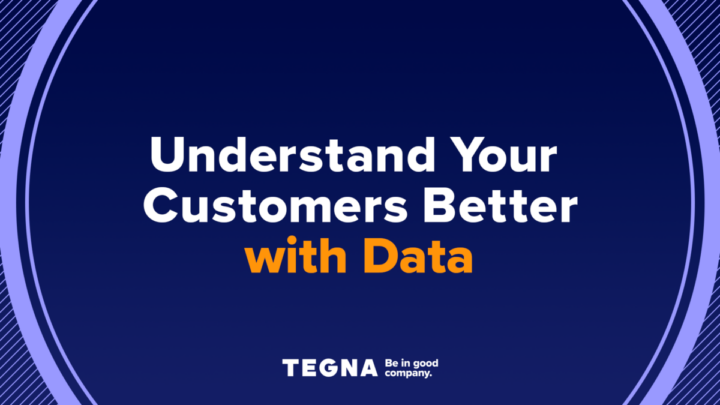What is an Omnichannel Strategy?
An omnichannel strategy is a comprehensive approach that seeks to create a seamless and consistent brand experience across all these touchpoints to capture consumers’ attention no matter where they are, stay top of mind, and lead them to purchase.

In today’s fast-moving consumer landscape, it feels like you need to be the 2023 Best Picture winner: Everything, Everywhere, All at Once.
It’s partially true.
Consumers interact with brands across multiple platforms – research from Forbes found that 98% of Americans switch between devices daily. This makes reaching them with advertising a challenge.
Part of the solution is meeting your audience where they are, whether online or off, during live TV events, in-person events, in your brick-and-mortar store, on your e-commerce website, … the list goes on.
An omnichannel strategy is a comprehensive approach that seeks to create a seamless and consistent brand experience across all these touchpoints to capture consumers’ attention no matter where they are, stay top of mind, and lead them to purchase.
Let’s dive into omnichannel marketing, exploring its definition, benefits, challenges, and practical steps to create a successful omnichannel experience for your business.
What is an Omnichannel Marketing Strategy?
The most important part of marketing is considering the consumer’s journey. Is it easy to navigate? Do the multiple channels you use communicate with each other? Or does the consumer have to restart their journey from the beginning on each platform?
An omnichannel marketing strategy provides a seamless and integrated customer experience across multiple marketing and sales channels. Omnichannel marketing aims to ensure a consistent brand experience across these channels, whether in-person, outdoor, or online, through websites, mobile apps, social media, email, or any other touchpoint.
While omnichannel is sometimes used interchangeably with terms like cross-channel and multi-channel marketing strategies, there are a few key differences to remember.
Omnichannel vs Multichannel: What’s the Difference?
The multichannel approach uses many channels, as the name implies, but the channels don’t necessarily talk to each other. For example, a consumer review on Yelp won’t be connected to the brand’s website, and the review won’t get you a discount code or sign you up for an email newsletter. Or, let’s say a consumer steps away from their computer and abandons their online shopping cart. When they return to the website, they must start the online journey from the beginning because the previous activity wasn’t recorded.
Cross-channel marketing is similar to multichannel marketing, but with the crucial difference that the marketing channels are interconnected, and customer interactions and information between channels are tracked, allowing customers to transition seamlessly in their journey.
For example, let’s say Brad sees an ad on TV. In the ad, he gets a unique URL to the company website, indicating that Brad has seen that specific ad. He signs up for newsletters on the website and receives a code for 50% off. This approach connects the online and offline channels, providing a better user experience with the brand.
How Omnichannel is Changing the Advertising Landscape
These insights show that omnichannel advertising isn’t changing the advertising landscape – consumer behavior is. As consumers seek a seamless, easy, and stress-free purchasing experience, it’s clear that online and offline channels must communicate to attract and retain customers. Without this communication, brands risk becoming obsolete.
A recent report from Forbes Advisor illustrates the need for brands to put the consumer and their experience first.
- 53% say the user experience matters as much as the products or services
- 48% are willing to pay more for quality customer service
- 46% will buy more when given a personalized experience
- 50% will share personal information for a more customized experience
- Consumers have also come to expect shipping tracking (52%), smooth transitions from social media to purchase (41%), contactless payments (37%), buy now pay later (36%), and curbside pickup (28%).
The Advantages of an Omnichannel Marketing Strategy
An omnichannel marketing strategy offers several advantages for businesses looking to engage with customers across various touchpoints and deliver a seamless, cohesive customer experience. Here are some of the key advantages:
Engage with Customers Across Multiple Touchpoints
Omnichannel marketing provides customers with a consistent and personalized experience across all channels and touchpoints, whether a physical store, website, mobile app, social media, or customer support. This consistency leads to higher customer satisfaction and loyalty.
Provide a Good User Experience
Customers can start their shopping journey on one channel and continue on another without any disruption. For example, they might research a product on a mobile device, visit a physical store to try it out, and then purchase it online. An omnichannel approach ensures a smooth transition between these touchpoints for hassle-free shopping, allowing users to pick up where they left off, no matter the device or location.
Create a Cohesive Brand Message
Consistency is key, and an omnichannel strategy enables you to deliver a unified brand message, strengthening brand awareness. A consistent presence across multiple channels increases your brand’s visibility, trust, and credibility, which helps you stay top-of-mind with your audience.
The Benefits of an Omnichannel Marketing Strategy
Since 80% of consumers favor an omnichannel experience, brands must cater to these preferences to effectively connect with their audience and cultivate a dedicated customer base. Doing so will not only increase your ROI, and we’ve found a few reasons why:
If Customers Use More Channels, They Spend More Money
Not only did research uncover that omnichannel customers spend 10% and 4% more online and in-store, respectively, but omnichannel shoppers also have a 30% higher lifetime value than single-channel shoppers. Purchase frequency is also 250% higher, and the omnichannel experience leads to a 90% higher retention rate.
Better Customer Data Means Better Persona Profiles
With Google phasing out third-party cookies, first-party data has become a must-have in shaping marketing strategies. After all, this data can help you understand your customers and help inform your persona profiles. With an omnichannel approach, you’ll have a wealth of first-party data to gain insights into your customers’ behaviors and preferences, see new trends emerging, and make data-driven optimizations to your campaigns, making them more effective.
Campaign Measurement
With a wealth of data across platforms, you’ll also be able to measure the results of your campaign effectively and make data-driven decisions when optimizing future campaigns. Common KPIs to measure in an omnichannel campaign include a customer’s lifetime value, number of customer interactions and touchpoints, engagement, cross-channel conversion rate, net promoter score, and more.
Challenges in Creating an Omnichannel Strategy
Meeting customer expectations for a seamless experience can be demanding. If a business needs to provide a consistent, integrated experience, it may result in customer satisfaction.
Creating an effective omnichannel strategy can be challenging due to many factors, including:
- Lack of Resources: The CMO Council found that 64% of marketers claim that lack of resources and investment is their top barrier to omnichannel marketing. Companies may need to invest in new software, hardware, and data management tools to develop APIs to ensure channels work seamlessly together and communicate correctly.
- Handling Customer Data: One of the biggest challenges is integrating data from various sources and channels. Businesses must ensure that customer data, transaction histories, and preferences are seamlessly shared across channels to provide a consistent and personalized customer experience while maintaining the highest standards of data protection laws.
- Measuring Success: Determining the effectiveness of an omnichannel strategy and attributing success to specific channels can be difficult due to the complexity of customer journeys. Measuring ROI and key performance indicators (KPIs) accurately is crucial but challenging.
How to Create an Omnichannel Experience
Creating a successful omnichannel experience involves integrating various marketing and sales channels to provide a seamless and consistent customer journey. Here are steps to help you develop an effective omnichannel strategy:
Integrate Data and Technology with a Good CRM
Investing in a robust customer relationship management (CRM) system as a centralized repository for all customer data (contact details, purchase history, preferences, browsing behavior, and feedback) and interactions from various touchpoints (website, mobile app, social media, email, physical stores, and customer service interactions) will help your omnichannel strategy in several ways. You’ll want to make sure that:
- Data Integration: The CRM system integrates with other software and data sources, such as e-commerce platforms, email marketing tools, social media analytics, and point-of-sale (POS) systems.
- Data Security: Privacy and security are paramount, especially when handling sensitive customer data. Implement robust data security measures to protect customer information. Compliance with data protection regulations, like GDPR or CCPA, is essential.
Know Your Customers
According to Salesforce, 70% of customers expect brands to understand their unique needs and expectations. Use data from your CRM to inform your customer persona profiles to better understand their needs, wants, how and where they consume content, shopping behaviors, preferences, recent purchases, abandoned shopping carts, website visits, and interactions with customer support. Consider the following to make this process easier:
- Predictive Analytics: Some advanced CRM systems incorporate predictive analytics to forecast customer behavior and suggest the best action for each customer.
- Automation and Personalization: Implement marketing automation tools that leverage customer data to personalize marketing campaigns. These tools can trigger personalized messages, offers, and recommendations based on customer behavior and preferences.
- Data Quality Assurance: Regularly clean and update customer data to ensure accuracy and completeness. Accurate data is essential for personalization and marketing effectiveness.
Use Real-time Insights
Ensure your systems provide real-time insights, enabling you to respond promptly to customer interactions. For example, if a customer abandons a cart online, you can send a personalized follow-up message in real time to encourage them to complete the purchase.
Don’t Forget to Focus on the In-Store Experience
The in-store experience is an essential and integral part of an omnichannel marketing strategy. It complements online channels, enriches the overall customer journey, and offers opportunities for engagement, branding, and data collection that can be leveraged to create a seamless and cohesive customer experience across all touchpoints. Areas to focus on include:
- Customer Assistance: In-store staff can provide personalized assistance, answer questions, and offer recommendations, enhancing the shopping experience. This human touch is valuable for complex or high-value purchases.
- Returns and Exchanges: Many customers prefer to return or exchange items in-store, making this a critical part of post-purchase customer service. An efficient and hassle-free in-store return process can enhance customer satisfaction.
- Community Building: Physical stores can serve as hubs for community building and brand events. Hosting events, workshops, or product launches, in-store can help strengthen your brand’s local presence and foster a sense of community among customers.
Measure Results
Measuring and optimizing your campaigns can make all the difference regarding your campaign’s effectiveness. Be sure to track customer interactions with analytics and attribution across channels. This allows you to understand the customer’s journey and measure the impact of each touchpoint on the conversion path.
Partner with TEGNA on your Omnichannel Strategy
In an age where customers demand consistency, personalization, and convenience, an omnichannel strategy is necessary for businesses seeking to thrive in the competitive landscape. By creating a harmonious brand experience across all touchpoints, you’re meeting customer expectations and exceeding them.
Team TEGNA is well-versed in omnichannel marketing strategies and can help unify your efforts across linear broadcast, CTV/OTT streaming, and digital channels. Let’s get in touch to chat about how we can help you reach your marketing goals.
Frequently Asked Questions
What drives success with an omnichannel strategy?
The key drivers of success include consistency in messaging, seamless integration between channels, deep customer understanding, and a commitment to delivering value across platforms.
What are omnichannel marketing techniques?
Omnichannel marketing techniques encompass a range of strategies, from integrating online and offline experiences to leveraging customer data for personalized interactions. The aim is to provide a consistent, cohesive, and delightful brand journey across all touchpoints.





















